Imagine strolling through a garden at dusk, when every leaf, rock, and wall seems to come alive with a faint, enchanting radiance. This is the essence of landscape grazing lighting. Unlike traditional overhead lighting, grazing lighting illuminates surfaces from the side, generating intriguing contrasts that emphasize the beauty of textures and shapes.
Landscape grazing lighting has developed as an effective method for transforming ordinary landscapes into enticing worlds of beauty in the domain of outdoor aesthetics. Outdoor grazing lighting has become a popular approach for both designers and homeowners due to its ability to highlight textures, contours, and architectural details. In this post, we’ll look into landscape grazing lighting, including its benefits, types, and trends, as well as how it may enhance the attractiveness of any outdoor location.
Landscape Grazing Lighting Definition. What is Landscape Grazing Lighting
Landscape grazing lighting is an artistic lighting method that consists of lighting an item, such as a textured wall, a fence, or a row of shrubs, with a narrow and focused beam of light. This approach generates an enticing appearance by emphasizing the lit object’s unique textures, patterns, and architectural elements. The light grazes the surface at a low angle, casting captivating shadows that enhance the overall visual appeal of the space. This technique is particularly effective for bringing out intricate textures, adding a touch of mystery, and increasing the visual appeal of both natural and built environments.

The Importance of Outdoor Landscape Grazing Lighting
Incorporating landscape grazing lighting into outdoor design elevates the aesthetic appeal and creates enchanting atmospheres that draw people into the beauty of their surroundings. By accentuating textures, shapes, and architectural features, exterior grazing lighting transforms ordinary spaces into extraordinary experiences. So, whether you’re hosting an evening soiree or seeking a tranquil retreat, consider the magic of grazing lighting to light up your outdoor world.
Landscape Grazing Lighting Advantages and Disadvantages
Landscape grazing lighting has emerged as a dynamic technique that effortlessly weaves artistry and functionality. This method of casting soft, focused beams of light on surfaces adds depth, drama, and a touch of enchantment to outdoor spaces. However, as with any lighting approach, there are advantages and disadvantages worth considering. In this guide, we delve into the pros and cons of outdoor grazing lighting, helping you make an informed decision about whether this technique is proper for your outdoor design goals.
Landscape Grazing Lighting Advantages
Architectural Emphasis: Grazing lighting is an excellent approach to highlighting architecturally distinctive aspects for homeowners. This approach emphasizes complex details that could otherwise go missed on a stone façade, elegant columns, or decorative panels.
Creative Versatility: Landscape grazing lighting is adaptable, allowing for a wide range of design concepts and preferences. This method may be modified to meet your chosen style, whether it’s a contemporary aesthetic, a rustic feel, or anything in between.
Dramatic Aesthetic Appeal: Landscape grazing lighting is an effective means of generating visually appealing settings. It adds depth and appeal to your outdoor area by emphasizing textures, patterns, and architectural details. The combination of light and shadow creates an enticing mood that attracts the eye and draws admiration.
Enhanced Security: Beyond its aesthetic benefits, grazing lighting contributes to the security of your property. By eliminating dark corners and shadowy areas, it minimizes potential hiding spots for intruders. Well-lit outdoor spaces are less inviting to those with malicious intent, enhancing the safety of your home.
Functional Extension of Outdoor Spaces: Grazing lights allow you to use your outdoor living spaces far into the night. This means you can continue to enjoy your patio, garden, or outdoor lounge area after the sun goes down, creating an enticing environment for mingling, leisure, and entertainment.
Energy Efficiency: Compared to other types of outdoor lighting that might illuminate larger areas, grazing lighting is relatively energy-efficient. Its focused and targeted approach uses fewer fixtures and consumes less power, making it an environmentally conscious choice.
Landscape Grazing Lighting Disadvantages
Limited Light Delivery: The narrow, focused beams of grazing lighting might not adequately illuminate large areas. If you’re seeking broad, even lighting for expansive spaces, grazing lighting alone may not be sufficient, necessitating the use of other lighting methods.
Glare and Harsh Shadows: Improper fixture placement or excessive light intensity can lead to glare and harsh shadows, detracting from the desired aesthetic. Achieving the perfect balance between grazing effects and avoiding discomforting glare requires meticulous design and installation.
Potential Light Pollution: When not carefully managed, grazing lights can contribute to light pollution, which has a negative influence on the surrounding environment, wildlife, and neighboring properties. Shielding fixtures and employing timers or sensors can help alleviate this concern.
Expertise Required: The successful execution of landscape grazing lighting demands a keen understanding of lighting principles, fixture placement, and design aesthetics. Without the necessary expertise, you may not obtain the desired results and may end up with a less spectacular result.
Intensified Maintenance: Grazing lighting fixtures are exposed to the elements, which can lead to dirt collection, water intrusion, and debris development. Regular cleaning and maintenance are required to guarantee that the fixtures stay functional and attractive.
Cost Considerations: While grazing lighting might save energy, the initial investment in excellent lights, professional installation, and regular maintenance can be costly. Proper planning and budgeting are required to ensure that the benefits outweigh the expenditures.
Types of Landscape Grazing Lighting
Landscape grazing lighting has emerged as an enthralling method that elevates the beauty and ambiance of outdoor spaces. By casting focused beams of light on surfaces, this method adds depth, drama, and enchantment to gardens, pathways, and architectural features. This guide delves into the main types of landscape grazing lighting: landscape ambient grazing lighting, landscape task grazing lighting, landscape accent grazing lighting, and landscape decorative grazing lighting. Understanding these types will enable you to create magnificent lighting solutions that will enhance your outdoor surroundings.
Landscape Grazing Ambient Lighting
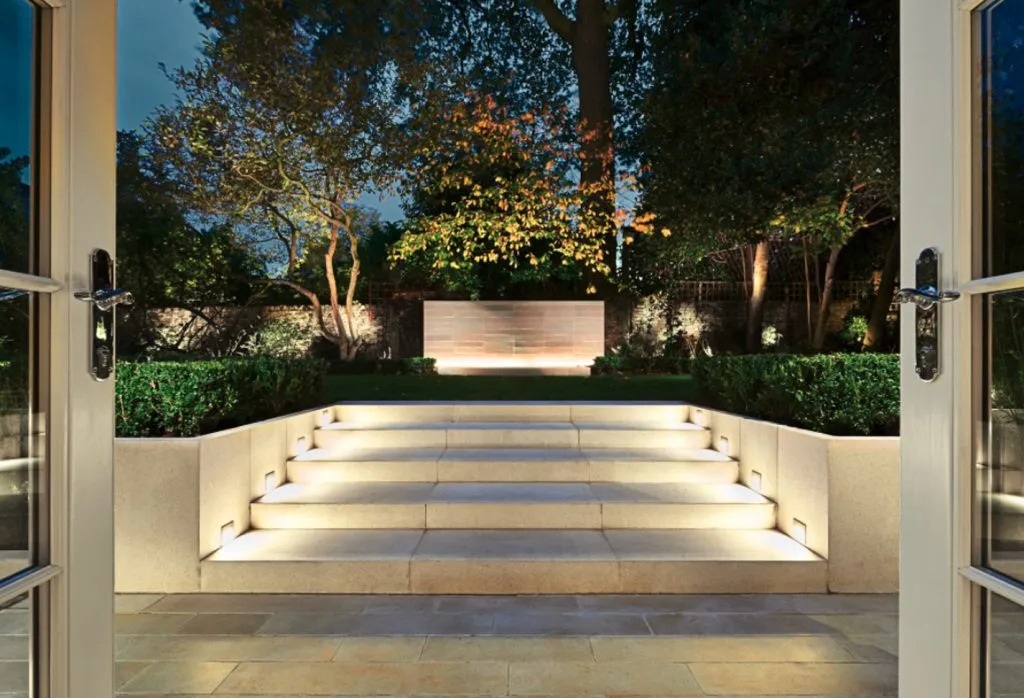
Landscape grazing ambient lighting focuses on producing soft, general lighting that creates a warm and inviting feel to outdoor places. This kind of grazing lighting seeks to gently shower surfaces with a subtle glow, boosting the mood and offering a comfortable environment for relaxation and social events. Applications include patio and deck areas that require a pleasant atmosphere, outdoor couches for relaxing and socializing, and garden walkways that direct guests while creating a calm setting.
Landscape Grazing Task Lighting
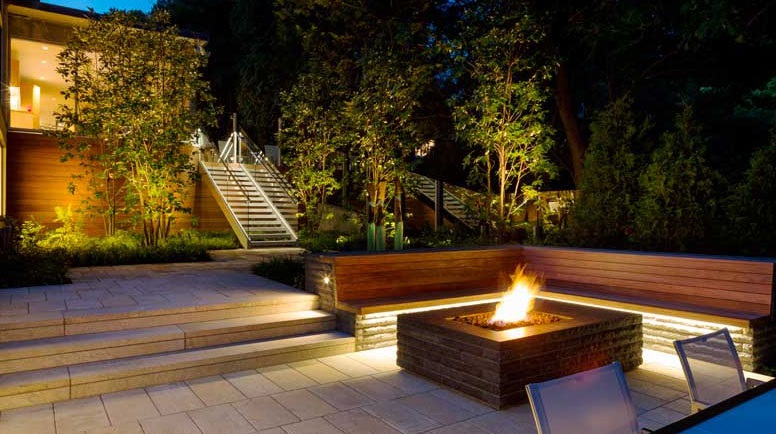
Landscape grazing task lighting is all about providing functional illumination for specific tasks or activities in outdoor areas. This type of grazing lighting is carefully positioned to guarantee that critical work can be completed safely and effectively even after sunset. Applications include steps, walkways, and paths to ensure safe navigation, outdoor kitchens, cooking areas, and workspaces or hobby zones in the garden.
Landscape Grazing Accent Lighting
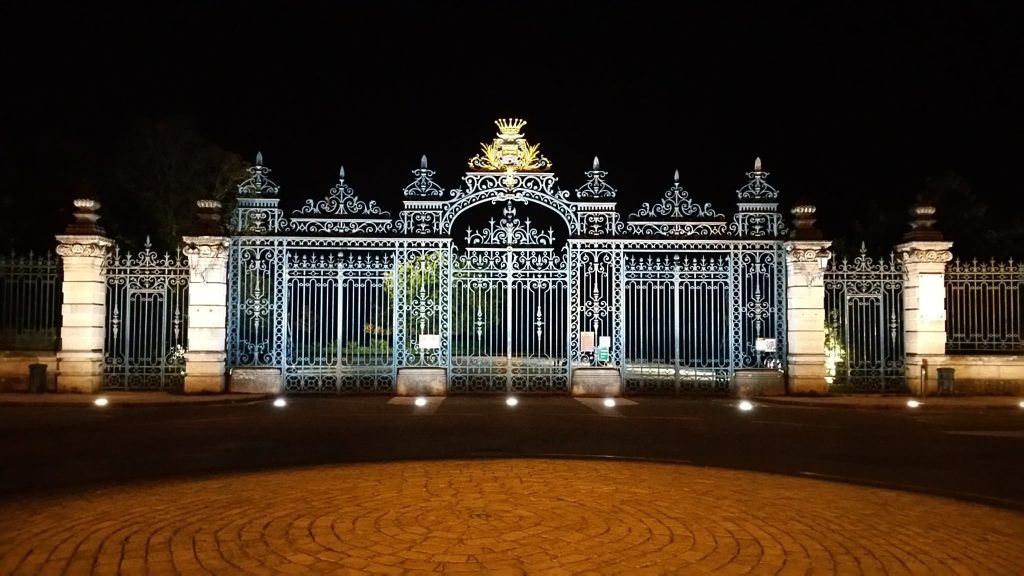
Landscape grazing accent lighting is meant to draw attention to focal points, architectural elements, or specific objects in the outdoor environment. This sort of grazing lighting adds drama and flair by casting light on surfaces from a certain angle, creating captivating shadows and emphasizing textures. Applications include lighting sculptures, artworks, or statues, highlighting the texture of stone walls or façades, and showcasing unique landscape features like fountains or ornamental trees.
Landscape Grazing Decorative Lighting
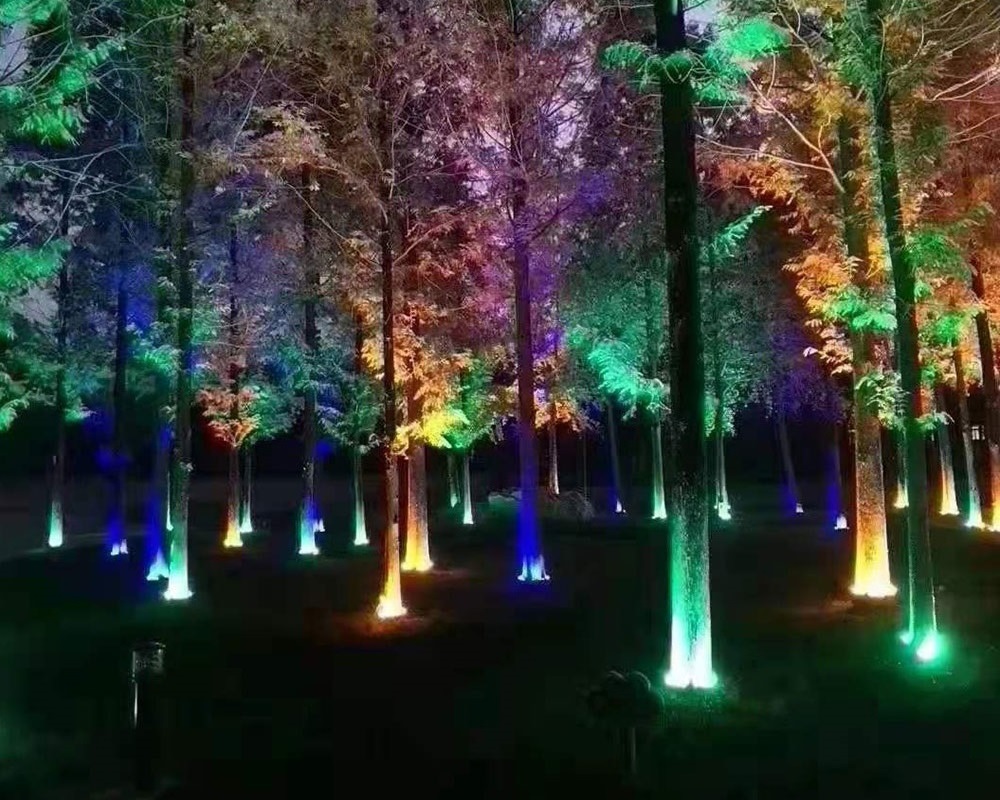
Landscape grazing decorative lighting is all about infusing a sense of artistry and creativity into your outdoor lighting design. This kind of grazing lighting uses a variety of colors, patterns, and styles to transform outdoor environments into visual masterpieces, allowing you to manipulate light like a brushstroke on a canvas. Applications include holiday decorations and other themed lighting displays, outdoor entertainment areas to set a festive mood, and special occasions, parties, or celebrations.
Types of Outdoor Grazing Lighting Fixtures
In the enchanting world of outdoor lighting, the method of landscape grazing lighting has captured the imagination of designers and homeowners alike. The art of casting focused beams of light to emphasize textures and architectural elements has the power to transform ordinary outdoor spaces into captivating scenes. A variety of fixtures take the stage in outdoor grazing lighting, each bringing its charm and boosting the beauty of your surroundings. Understanding these fixtures can help you develop spectacular lighting designs that bring your outdoor environment to life.
Landscape Grazing Lighting Uplights
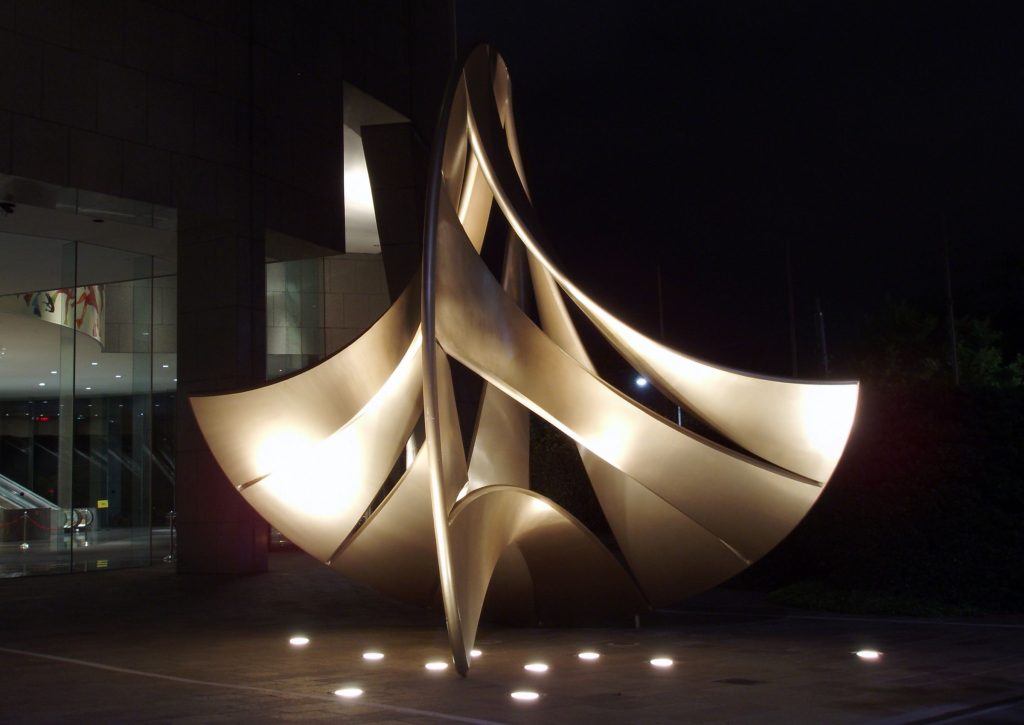
Landscape grazing lighting uplights are fixtures designed to cast gentle beams of light upward, creating a mesmerizing interplay of light and shadows. These fixtures are often positioned at the base of architectural features, trees, or decorative elements to enhance their textures and add a touch of drama. Applications include highlighting architectural columns and pillars, emphasizing tree canopies and foliage, and enhancing the beauty of sculptures and art installations.
Outdoor Grazing Lighting Led Strip Lights
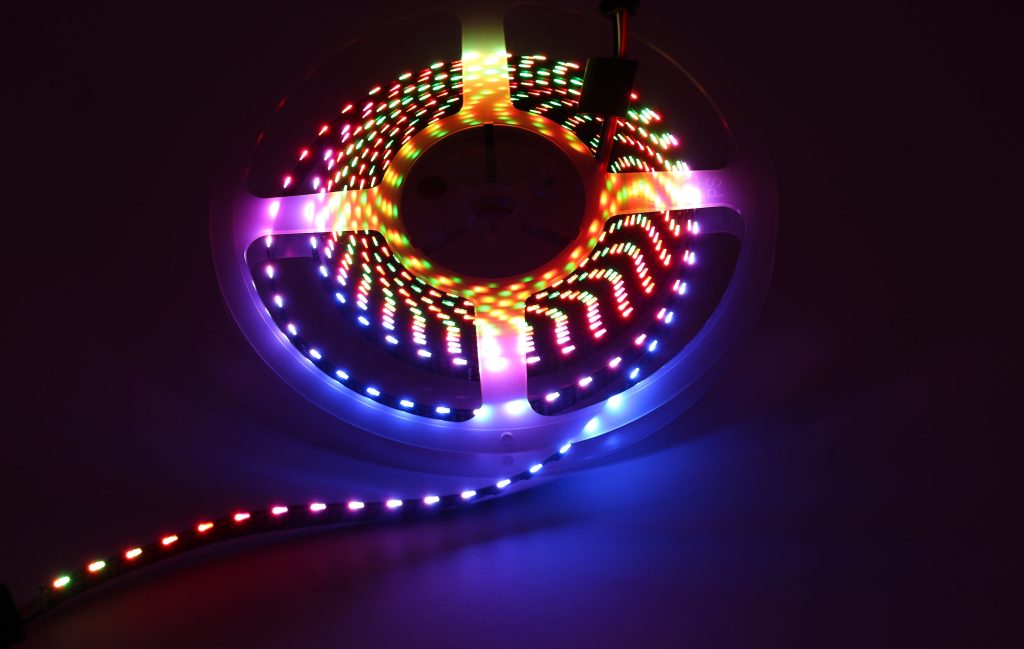
Outdoor grazing lighting LED strip lights are flexible and versatile fixtures that can be mounted on various surfaces to add subtle illumination. These strips consist of small LEDs arranged in a linear pattern, allowing for creativity in lighting designs and accentuating architectural lines. Applications include lighting pathways and walkways, enhancing the contours of outdoor seating areas, and highlighting the edges of walls or plant beds.
Outdoor Grazing Lighting Fence-Mounted Fixtures
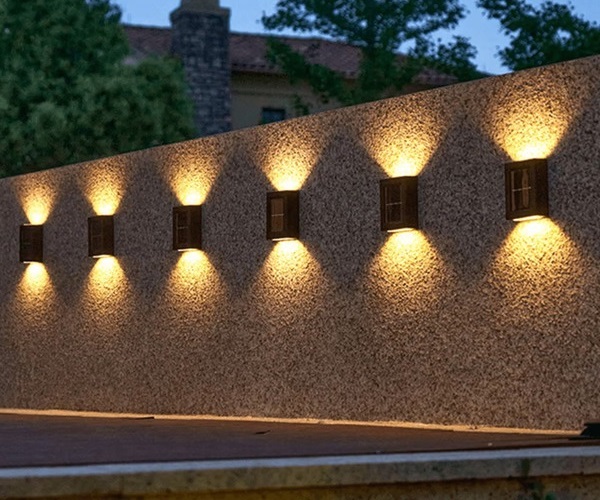
Outdoor grazing lighting fence-mounted fixtures are designed to be attached to fences, railings, or other linear structures. These fixtures emit a narrow beam of light that grazes the surface, enhancing textures and adding a layer of security to outdoor spaces. Applications include lighting garden fences and boundary walls, enhancing the aesthetics of railings and outdoor structures, and providing accent lighting to pathways and walkways.
Outdoor Grazing Lighting Rock and Stone Lights
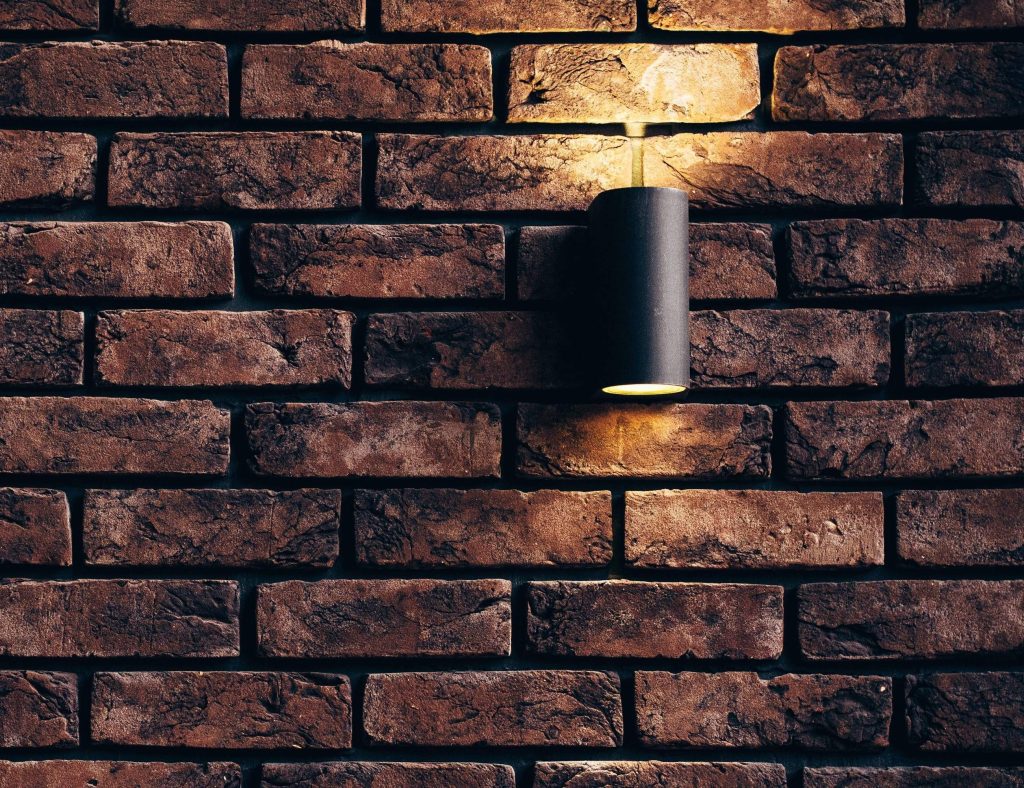
Outdoor grazing lighting rock and stone lights blend seamlessly with natural landscapes, gently illuminating rock formations, boulders, and stone pathways. These fixtures complement outdoor textures, creating a rustic and enchanting ambiance. Applications include enhancing the character of rock formations and pathways, illuminating garden features with an organic feel, and creating a warm and inviting atmosphere in outdoor spaces.
Outdoor Grazing Lighting Wall Mount Lights
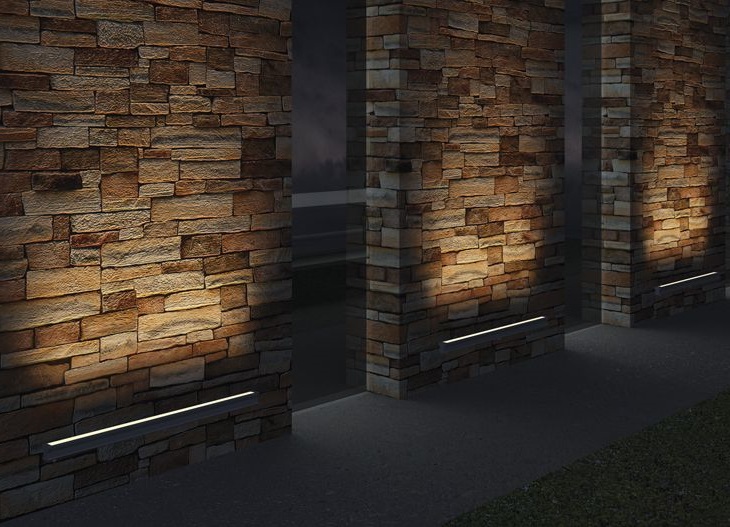
Outdoor grazing lighting wall mount lights are fixtures affixed to vertical surfaces to cast an even sweep of light. These lights create an elegant grazing effect, emphasizing architectural features, textures, and patterns on walls and façades. Applications include highlighting the texture of exterior walls and façades, accentuating decorative panels or stonework, and adding a touch of sophistication to outdoor areas.
Outdoor Grazing Lighting Well-Lights
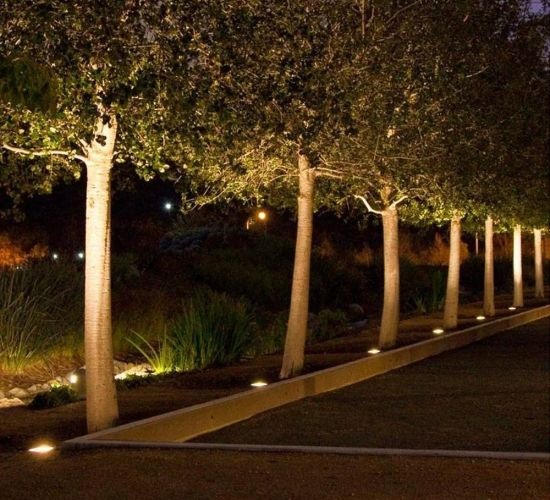
Outdoor grazing lighting well-lights are discreet fixtures installed flush with the ground. These fixtures emit a narrow, focused beam of light that grazes vertical surfaces, adding depth and texture to outdoor features. Well-lights are often used to accentuate elements that are closer to the ground. Applications include highlighting ground-level textures, such as pathways, enhancing the beauty of low-growing shrubs and plants, and lighting architectural elements near ground level.
Guide to Installing Outdoor Landscape Grazing Lighting
Outdoor landscape grazing lighting can transform outdoor spaces into enchanting realms of light and shadow. From accentuating textures to highlighting architectural features, a well-executed installation can elevate the aesthetics and functionality of your environment. This tutorial will walk you through the essential steps of installing outdoor landscape grazing lighting. From planning and designing to fine-tuning the system, this guide will ensure that your outdoor lighting project shines with brilliance.
Plan and Design
Survey your outdoor space and identify areas you wish to illuminate. Consider the lighting effects you want to achieve, such as accenting textures, showcasing architectural features, or creating a comfy ambiance.
Map Out the Design: Sketch a layout of your outdoor space, indicating where you want to place the fixtures and the areas you intend to illuminate.
Choose Fixture Types: Based on your desired lighting effects, select the appropriate types of fixtures, such as uplights, LED strip lights, well lights, or wall-mounted fixtures.
Determine Fixture Placement: Determine the optimal placement of fixtures to achieve the desired effects. For example, well lights can be positioned near trees, uplights can accentuate architectural elements, and LED strip lights can line pathways.
Gather Materials
Compile a list of required materials based on your fixture choices and layout design. Ensure you have all the necessary tools for installation, such as a shovel, wire stripper, and connectors.
Purchase Fixtures: Acquire the chosen fixtures, ensuring they are suitable for outdoor use and compatible with your design.
Gather Wiring and Connectors: Procure the necessary wiring, connectors, and any additional components required for your lighting system.
Collect Tools: Assemble the tools you’ll need for installation, including a shovel, wire stripper, connectors, and a transformer.
Install Fixtures
Review the manufacturer’s instructions for each fixture type to ensure proper installation. Plan the positioning of fixtures according to layout design.
Prepare the Ground: Use a shovel to create holes or trenches where you intend to place the fixtures. Make sure the holes are deep enough to retain the fittings firmly.
Install Fixtures: Carefully place each fixture in its designated spot, ensuring they are stable and level. Position well lights flush with the ground, and follow the manufacturer’s installation instructions for other fixtures.
Connect Wiring and Transformer
Make sure you are following safety precautions when working with electrical components. Consult the manufacturer’s instructions for proper wiring connections.
Connect Wiring: Strip the ends of the wiring and connect them to the fixtures according to the manufacturer’s instructions. Use connectors to secure the wiring in place.
Connect to Transformer: Attach the wiring from the fixtures to the low-voltage transformer. The transformer should be placed in a weatherproof location and connected to a power source.
Test the System
Ensure all wiring connections are secure before testing the system. Keep the transformer unplugged until all of the links are complete.
Plug in the Transformer: Once all wiring connections are in place, plug in the transformer to power the system.
Test Each Fixture: Turn on the system and test each fixture separately to confirm they are working correctly. Make any necessary adjustments to fixture placement or wiring connections.
Fine-Tuning
Prepare to make minor adjustments to achieve the desired lighting effects. Consider the positioning, angle, and intensity of each fixture.
Adjust Fixture Positioning: Observe the lighting effects and adjust the positioning of fixtures to achieve the desired illumination and shadow patterns.
Experiment with Angles: Play with the angles of the fixtures to create different effects, such as accentuating textures or highlighting architectural elements.
Dimming and Timing: Experiment with dimming settings and timers if your system allows it to modify the ambiance for different occasions.
Landscape Grazing Lighting Outdoor Best Practices
Landscape grazing lighting is an enthralling method that breathes life into outdoor spaces, creating stunning plays of light and shadow that transform the ordinary into the extraordinary. However, to ensure that your outdoor environment truly shines with brilliance, it is essential that you follow best practices in design, installation, and maintenance. This guide will explore the key aspects of landscape grazing lighting outdoor best practices. From creative design ideas to avoiding common mistakes and maintaining your lighting system, this guide will help you achieve an outdoor ambiance that captures the imagination and leaves a lasting impression.
Design Ideas for Landscape Grazing Lighting
Designing an enchanting landscape grazing lighting setup can transform your property into a mesmerizing masterpiece, leaving a lasting impression on visitors and enhancing visual appeal. The options are unlimited, from highlighting textured surfaces to accentuating aquatic elements.
Create Focal Points
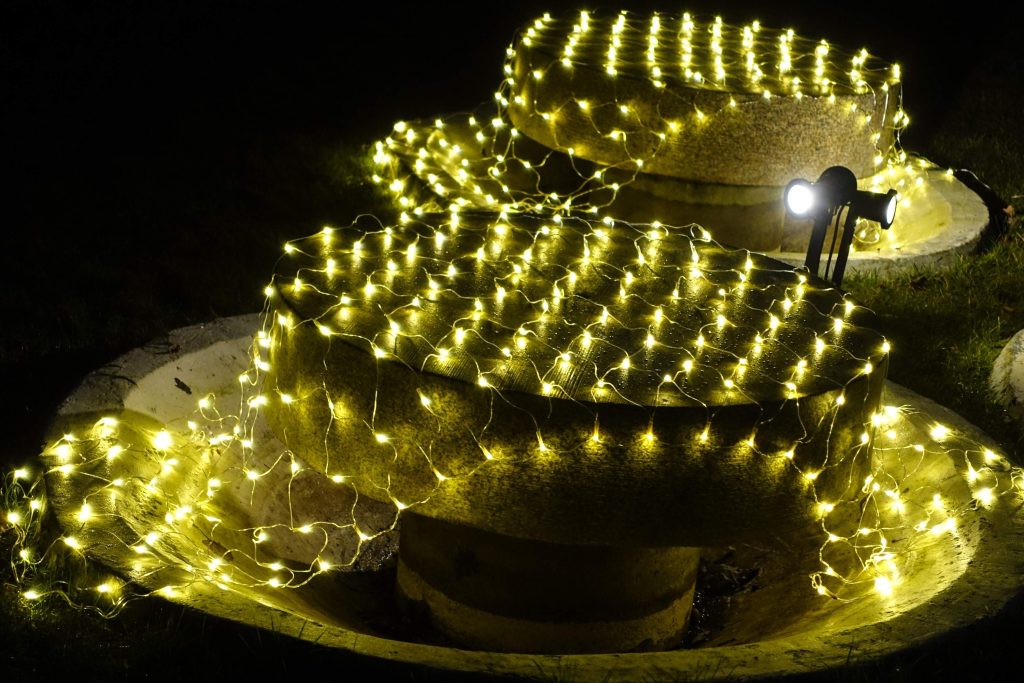
Highlight prominent elements in your landscape, such as statues, artwork, or decorative trees. You can create dynamic and captivating effects by utilizing grazing lighting to cast light on these elements from multiple angles.
Highlight Textured Surfaces
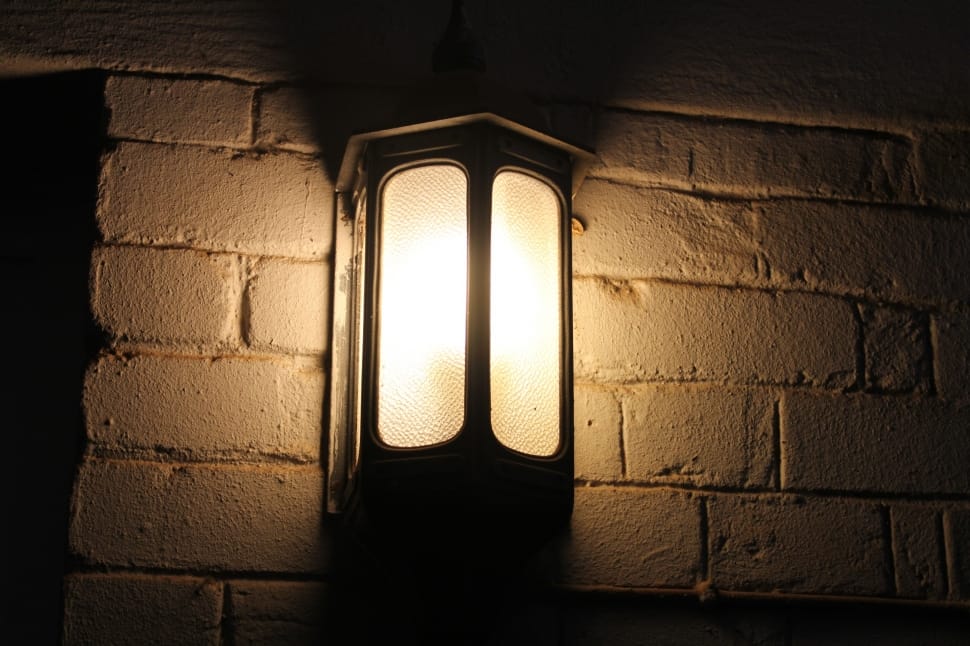
Embrace the beauty of your outdoor space by using grazing lighting to accentuate the textures of walls, façades, and natural stone formations. Choose fixtures that cast light at an angle to create captivating shadows that enhance the surface’s character.
Illuminate Architectural Features
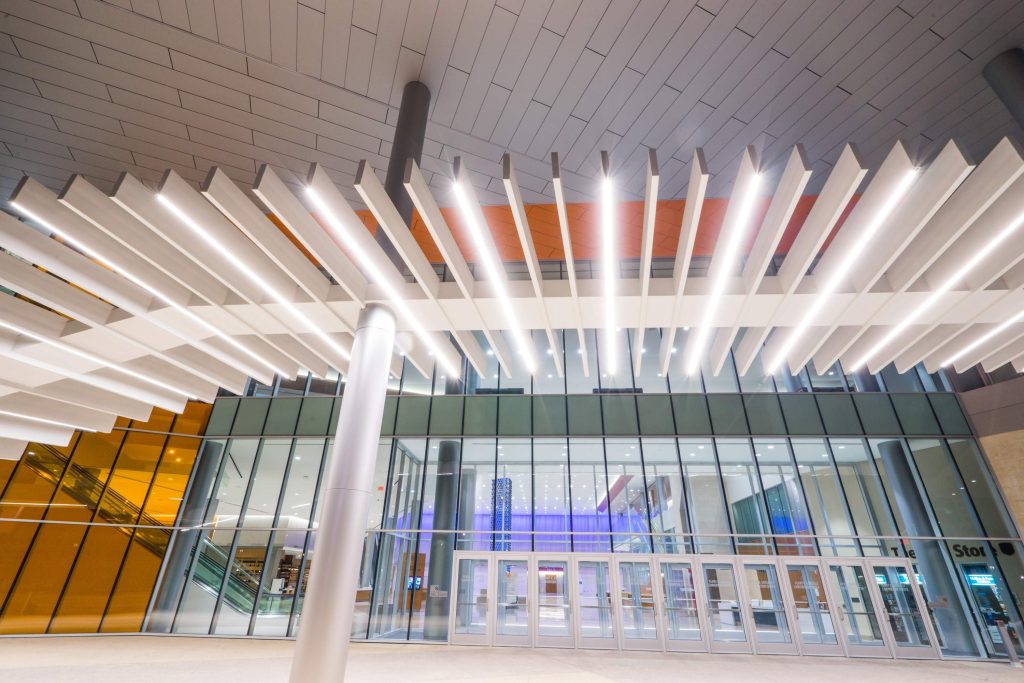
Enhance the architectural elegance of your home or outdoor structures by strategically placing grazing lighting fixtures along columns, pillars, or decorative elements. This technique adds a touch of grandeur and sophistication to your exterior space.
Accentuate Greenery
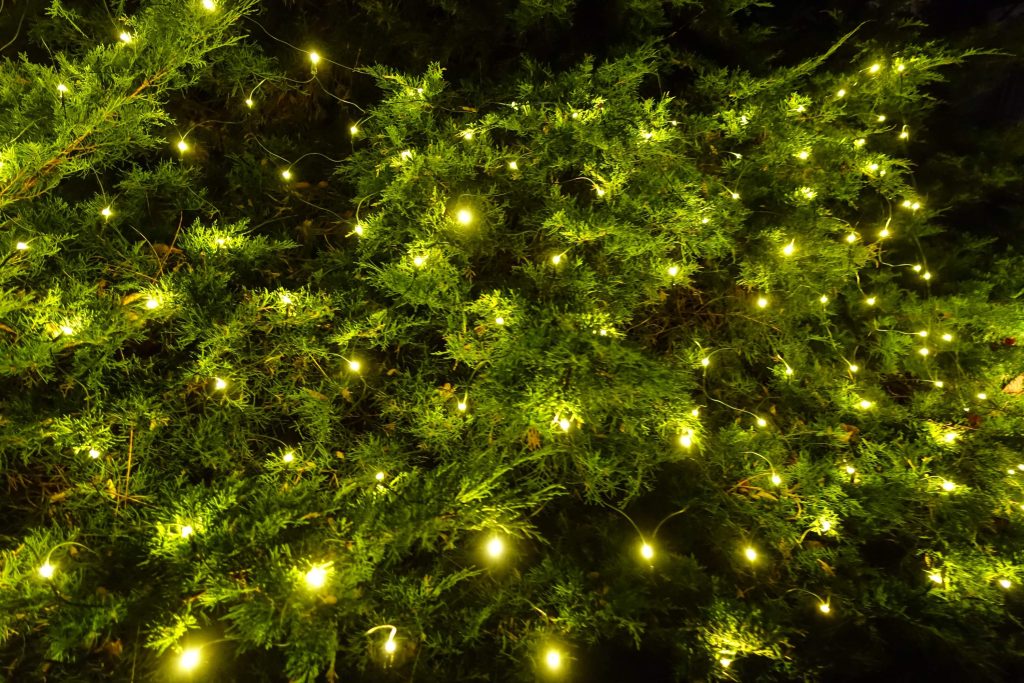
Transform your garden’s greenery into a visual masterpiece by grazing lighting along the edges of plant beds. This approach adds dimension to the environment and emphasizes the distinct textures of the leaves, bringing your garden to life.
Enhance Water Features
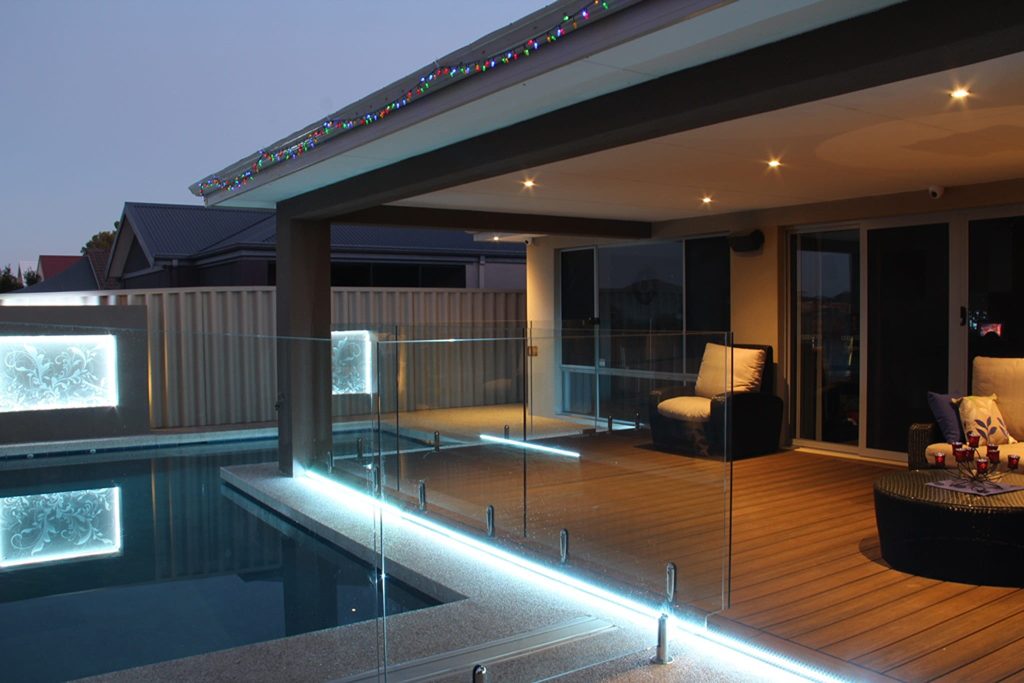
Elevate the allure of water elements such as ponds, fountains, or waterfalls by using grazing lighting to cast enchanting reflections on the water’s surface. This technique adds a touch of magic to your outdoor oasis.
Avoiding Common Mistakes in Landscape Grazing Lighting
One of the most common mistakes is placing fixtures haphazardly, resulting in uneven or ineffective lighting effects. Take the time to plan and experiment with fixture placement to achieve the desired results.
Excessive lighting can lead to harsh shadows, glare, and an unnatural appearance. Avoid over-illumination by choosing fixtures with appropriate light intensity and opting for warm light temperatures.
Failing to clean and maintain your fixtures can lead to reduced performance and a dull lighting display. Regularly clean the fixtures, remove debris, and replace any damaged components to ensure optimal functionality.
Improperly shielded fixtures can contribute to light pollution, negatively impacting the environment and neighboring properties. Opt for fixtures with appropriate shielding and consider using timers or sensors to minimize unnecessary light emission.
Inadequate wiring connections can lead to flickering lights or even system failure. Ensure that wiring connections are secure and weatherproof to prevent disruptions to your lighting display.
Maintenance and Troubleshooting Tips
Regular Cleaning: Keep your fixtures free of dirt, debris, and insects that could block light performance. Wipe down the components and clean the lenses on a regular basis to keep them clear.
Inspect Wiring: Inspect the electrical connections on a regular basis for evidence of wear or damage. Faulty connections might cause flashing lights or system breakdowns. Make repairs as soon as possible to guarantee consistent functionality.
Address Dimming Lights: If you notice that your grazing lighting dims over time, it could indicate issues with the transformer or voltage drop. Check the transformer settings and consult a professional if needed.
Troubleshoot Non-Functioning Fixtures: Check the wire connections, fuses, and bulbs if a fixture stops working. Replace any faulty components and check that the transformer is operational.
Adjust for Seasonal Changes: The angles and intensities of natural light differ as the seasons change. To maintain the desired lighting effects throughout the year, adjust the angle and positioning of your fixtures.
Trends and Innovations in Landscape Grazing Lighting
As technology evolves, the world of landscape lighting is undergoing a transformation, providing fascinating developments and solutions that enhance outdoor areas to new levels of beauty and functionality. From the efficiency and lifespan of LED grazing lighting to the sustainable power of solar-powered lights and the ease of motion and dusk-to-dawn sensors, each innovation provides unique benefits that cater to diverse needs and tastes. By staying informed and incorporating these trends, you can design outdoor areas that are not only physically appealing but also environmentally responsible and functional. Embrace these trends and breakthroughs to brighten your outdoor surroundings with the magic of light and create an ambiance that captivates the senses and transforms ordinary moments into amazing memories.
LED Grazing Lighting
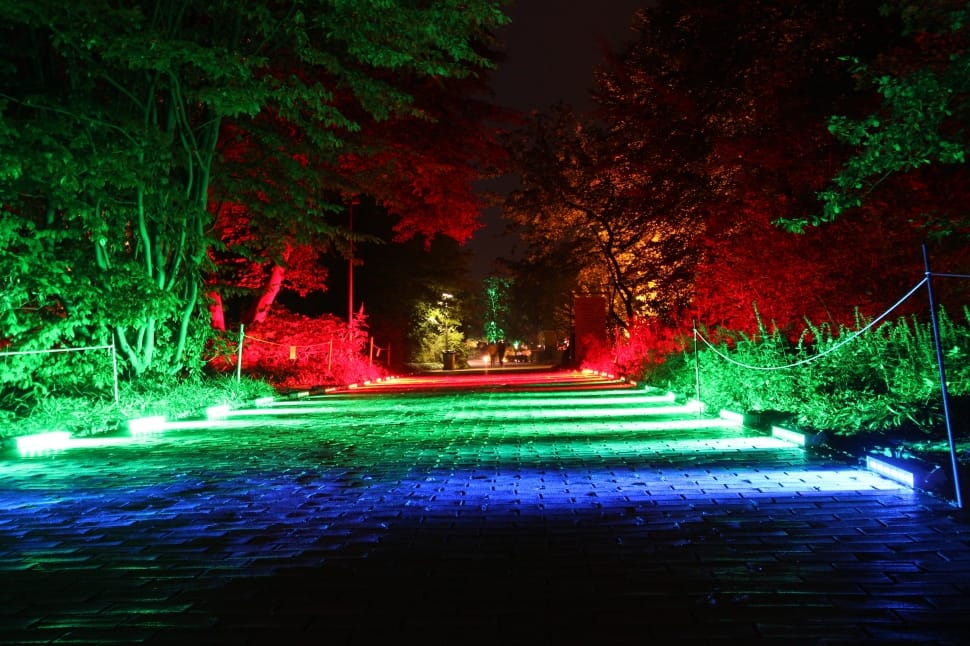
LED grazing lighting is a remarkable improvement in outdoor lighting technology. LEDs (Light-Emitting Diodes) provide energy-efficient illumination with exceptional endurance, making them an excellent choice for landscape grazing lighting. LEDs are available in a variety of color temperatures, allowing you to generate the appropriate atmosphere and visual effects.
Outdoor Grazing Lighting Solar-Powered

Outdoor grazing lighting solar-powered fixtures tap into the sun’s energy to illuminate your outside space. These fixtures feature built-in solar panels that charge during the day and provide illumination at night. Solar-powered fixtures operate autonomously, reducing reliance on traditional power sources and reducing carbon footprint, contributing to a greener environment, and there is no need for wires or cables.
Outdoor Grazing Lighting with Motion Sensor
Outdoor grazing lighting with motion sensors offers a dynamic approach to lighting. These fixtures are equipped with sensors that detect movement, instantly illuminating the surrounding area. The lights only activate when motion is detected, conserving energy and reducing overall power consumption. Motion-sensor lighting deters intruders by flooding the area with light, increasing visibility, and discouraging unwanted activity. Motion-sensor lighting delivers lights just when it is required, such as when you get home or are traversing your outside space at night.
Outdoor Grazing Lighting with Dusk to Dawn Sensor
Outdoor grazing lighting with dusk-to-dawn sensors is designed to automatically turn on when ambient light levels drop at dusk and turn off when dawn breaks. Dusk-to-dawn sensors eliminate the need for manual operation, ensuring your outside space is consistently lit during nighttime hours. These sensors prevent lights from operating during daylight hours, reducing unnecessary energy consumption.
Real-Life Outdoor Landscape Grazing Lighting Designs
Real-life outdoor landscape grazing lighting designs demonstrate the limitless ingenuity and elegance that lighting can produce. From accentuating architectural features on houses to transforming fences, decks, porches, trees, and walls into captivating elements, these designs showcase the magic of light and shadow. By drawing inspiration from these real-life examples and tailoring them to your outdoor space, you can create an environment that is not only visually appealing but also full of personality and charm. Embrace the power of landscape grazing lighting to craft an outdoor oasis that captivates the senses and evokes a sense of wonder.
Outdoor Grazing Lighting on House
Outdoor grazing lighting on the house focuses on lighting architectural features and textures. By casting light upwards or at an angle, these designs create dramatic shadows that enhance the character of the house’s façade.
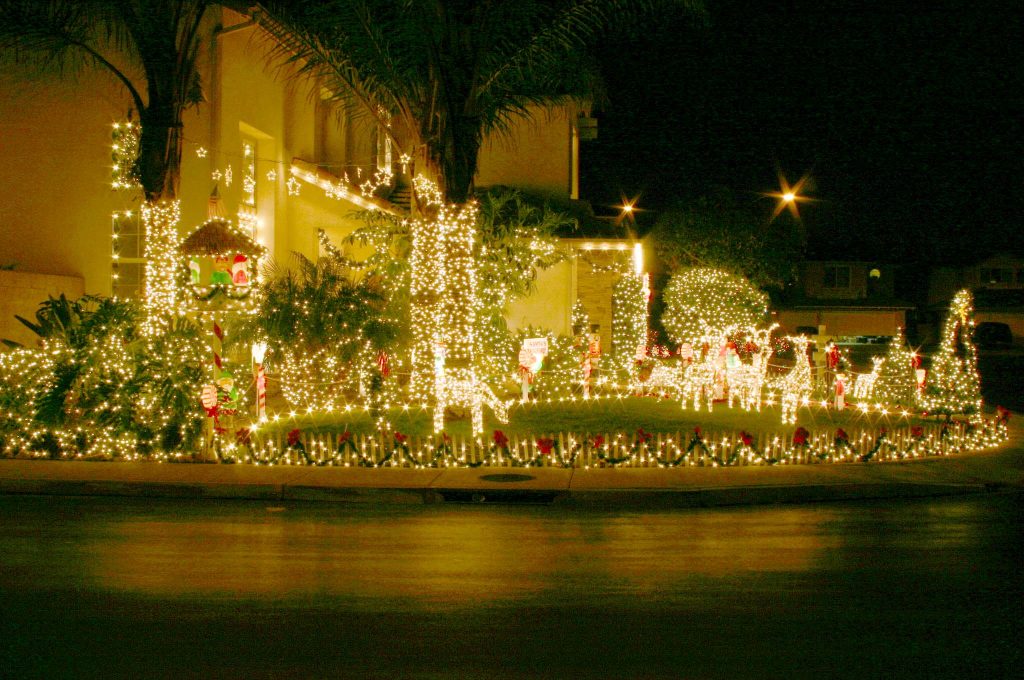
Install uplights at the base of columns, pillars, or ornate detailing to showcase the architectural beauty of your home’s exterior. This technique emphasizes the texture of materials and adds an enchanting touch to your house’s nighttime appearance.
Outdoor Grazing Lighting on Fence
Outdoor grazing lighting on the fence enhances boundaries while adding an artistic flair. Well-placed fixtures along the fence create captivating lines of light that extend the visual appeal beyond the edge of the property.
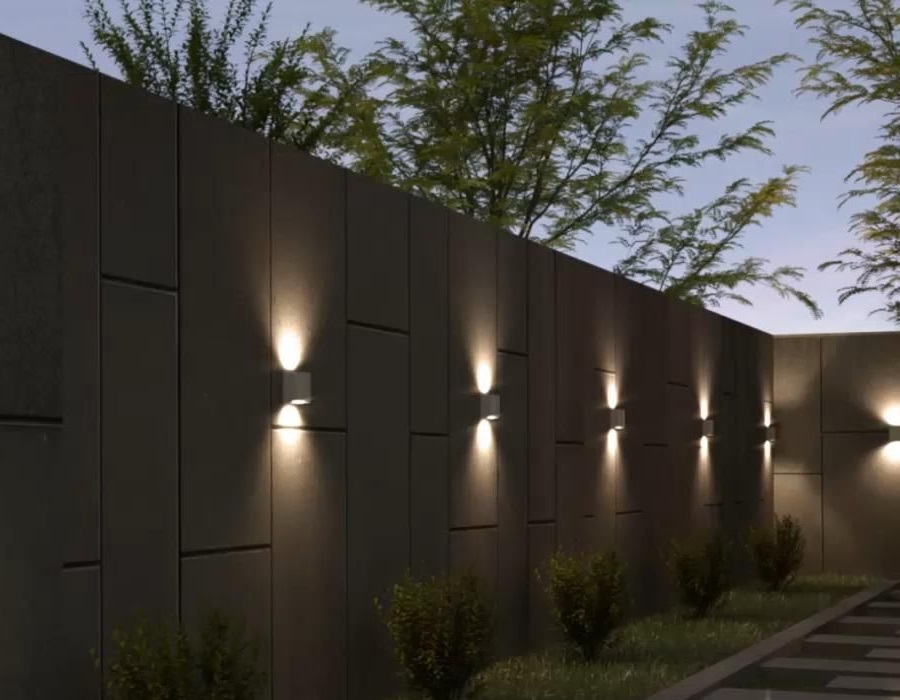
Use fence-mounted fixtures to cast a soft glow along the length of your fence, creating a warm and welcoming ambiance. This design enhances security and transforms the boundary into a visually captivating exterior feature.
Outdoor Grazing Lighting on Deck
Outdoor grazing lighting on the deck is designed to extend the usability of the outside space well into the night. Carefully positioned fixtures illuminate the deck’s surface while highlighting its contours and edges.

Incorporate LED strip lights along the edges of your deck to create a soft, inviting glow that guides guests and accentuates the deck’s shape. This design enhances safety and infuses the deck with a touch of elegance for nighttime gatherings.
Outdoor Grazing Lighting on Porch
Outdoor grazing lighting on the porch aims to create a serene and inviting atmosphere. These designs generate a sense of warmth and relaxation by including fixtures that cast comforting beams of light.
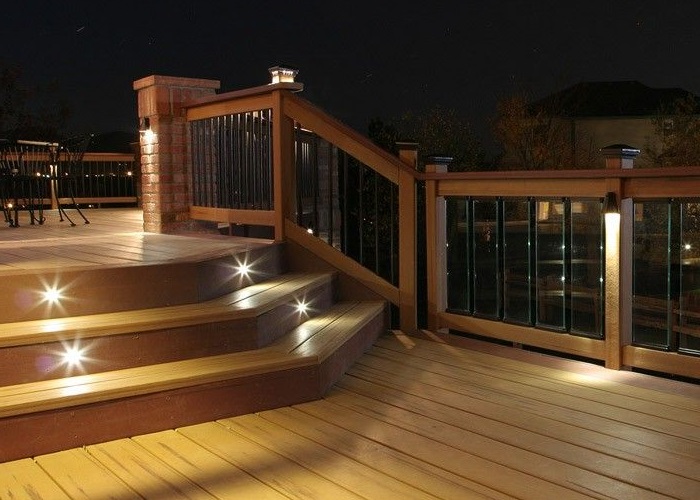
Install low-level fixtures along the railing or porch posts to create a soft and comfy ambiance. This design welcomes you home with a calming glow and transforms your porch into a relaxing haven.
Landscape Grazing Lighting on Trees
Landscape grazing lighting on trees is a beautiful way for bringing trees to life at night. The textures of branches and leaves are accentuated considerably by projecting light upwards from the base of the trees.
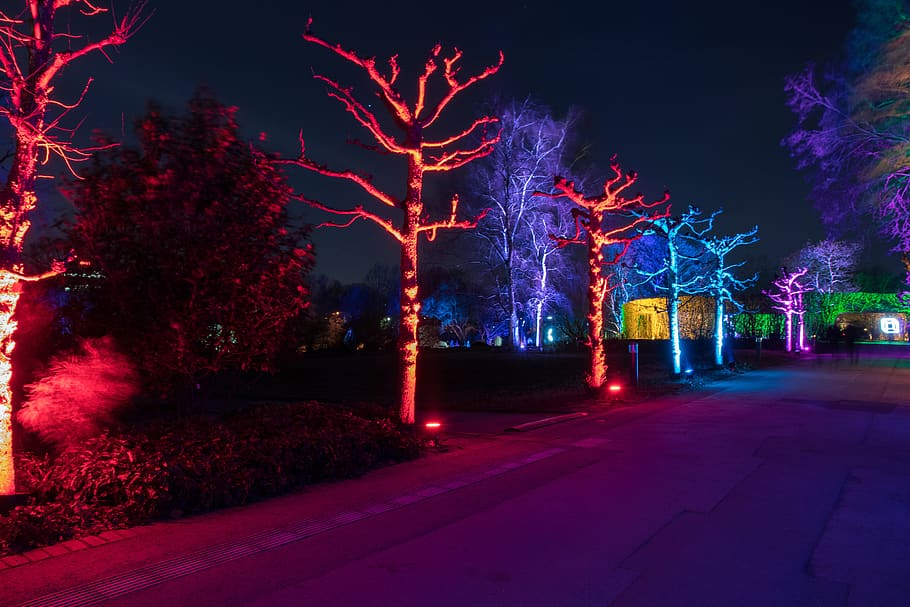
Use uplights at the base of trees to generate enticing shadows on the canopy and branches. This design adds depth to your environment while emphasizing the natural beauty of your trees.
Outdoor Grazing Lighting on Wall
Outdoor grazing lighting on walls gives depth and drama to vertical surfaces. Using wall-mounted lighting, you may create dramatic plays of light and shadow that complement the architectural characteristics of your outdoor walls.

Install wall-mounted fixtures to cast light at an angle across rough surfaces. This design highlights the complex intricacies of your walls, transforming them into visually appealing aspects of your outside surroundings.
Conclusions
Landscape grazing lighting emerges as an enticing method in the field of outdoor lighting, skillfully playing with light and shadow to transform ordinary settings into enchanting realms. This lighting approach has the ability to enhance the beauty and atmosphere of outdoor areas to new heights by utilizing a profound understanding of design principles and the creative interplay of fixtures.
At its core, landscape grazing lighting is an art form that leverages the power of light to accentuate textures, highlight architectural features, and enhance the overall aesthetics of outdoor spaces. By casting focused beams of light onto surfaces from varying angles, this technique creates captivating plays of light and shadow that evoke emotions, engage the senses, and leave a lasting impression.
Central to the success of outdoor grazing lighting are the diverse types of fixtures, each carefully selected to achieve specific effects. From uplights that elevate architectural beauty to LED strip lights that add functional illumination, each component adds its own distinct flair to the overall design. The artistry is in coordinating these fixtures and combining their effects to create a dynamic and multi-dimensional lighting landscape.
As we conclude our exploration of landscape grazing lighting, we invite you to embark on your own journey of outdoor lighting. Let your creativity flow, experiment with fixtures and effects, and transform your outside environment into an enchanting sanctuary that reflects your unique vision. The art of exterior grazing lighting is not merely about lighting up the night; it’s about shaping experiences, creating ambiance, and painting a masterpiece that celebrates the beauty of light in the world around us.
FAQs (Frequently Asked Questions) about Landscape Grazing Lighting
Q1. Can I change the colors of grazing lights?
Yes, many grazing lighting systems allow you to experiment with colors to create different effects and moods.
Q2.Can I install landscape grazing lighting myself?
While DIY installation is possible, hiring a professional ensures optimal results and safety.
Q3. Is landscape grazing lighting suitable for all outdoor spaces?
Landscape grazing lighting can be adapted to various outdoor environments, from gardens to patios and architectural facades.
Q4. Can I install grazing lighting on uneven terrain?
Yes, fixtures can be adjusted and elevated to accommodate uneven surfaces.
Q5.Can landscape grazing lighting improve home security?
Landscape grazing lighting is a powerful tool that can significantly enhance home security. Homeowners can create a safer living environment and dissuade potential attacks by illuminating important areas, boosting visibility, and deploying motion sensors.
Q6.Can landscape grazing lighting increase the value of my property?
Landscape grazing lighting is an investment that can increase the value of your property. The combination of enhanced visual appeal, expanded living spaces, safety, and aesthetic versatility produces a package that appeals to a wide range of customers.
Q7.How do I maintain my landscape grazing lighting system?
Regularly clean fixtures and remove debris to maintain their performance. Check for any damaged bulbs, cables, or fixtures and address issues promptly.
Q8.What color of light is best for landscape grazing lighting?
The best color of light for landscape grazing lighting largely depends on the atmosphere you want to create and the specific elements you wish to highlight. Warm white light (2700K to 3000K) brings a comfy charm, neutral white light (3500K to 4000K) offers versatility, and cool white light (4000K to 5000K) adds a modern touch.
